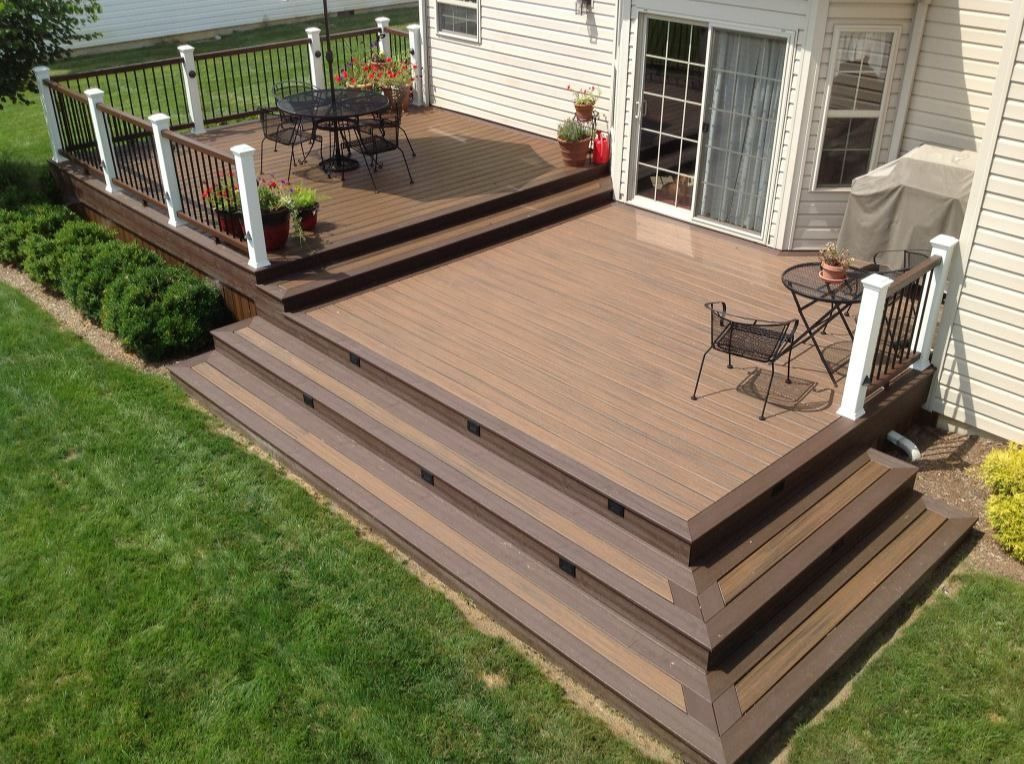Indiana homeowners are increasingly turning to composite decking materials as they seek durability, beauty, and lower maintenance for their outdoor spaces. One standout product that has captured attention across the state is Trex decking. As more people consider their options, a common question arises: why choose Trex decking over wood for Indiana backyards? While wood has been a longtime favorite, the introduction of innovative composite options has redefined what’s possible in outdoor design and performance.
Understanding Trex Decking
What is Trex Decking?
Trex is a leading brand in composite decking, made primarily from recycled wood fibers and plastic. This blend creates a product that mimics the look of natural wood without the downsides of rot, insect damage, or frequent maintenance. With a range of colors, textures, and board profiles, Trex provides homeowners with flexible design options to suit any architectural style.
How Trex Differs from Traditional Wood
Traditional wood decks, typically built from pressure-treated pine, cedar, or redwood, offer a warm, natural aesthetic but demand significant upkeep. Staining, sealing, and repairs are common, especially in climates with shifting weather conditions like Indiana’s. Trex, on the other hand, is designed for longevity and resistance. It doesn’t splinter, warp, or fade as easily, giving homeowners peace of mind and long-term value.
Why Trex Decking Is Ideal for Indiana Climates
Withstanding the Elements
Indiana experiences a full range of seasons, from hot, humid summers to icy, snow-laden winters. Wood reacts to these changes, expanding, contracting, and often cracking over time. Trex decking is engineered to resist these effects. Its composite structure holds up better under fluctuating conditions, ensuring a stable, safe, and visually appealing surface year-round.
Moisture and Rot Resistance
Backyards in Indiana can be subjected to heavy rains and occasional flooding. Wood decks, if not properly treated and maintained, can suffer from rot and mold growth. Trex decking resists moisture absorption, helping prevent decay and extending the life of your deck. This feature is especially important in low-lying or shaded yards where water drainage can be a concern.
Low Maintenance Needs
One of the strongest reasons to explore why choose Trex decking over wood for Indiana backyards is the minimal maintenance required. With wood, seasonal sanding, staining, and repairs are typical. Trex requires only occasional cleaning with soap and water to retain its color and texture. That means less time maintaining and more time enjoying your outdoor living space.
Aesthetic Appeal and Customization
Rich Colors and Textures
Trex offers a broad palette of finishes that mimic the warmth and grain of real wood, without the imperfections or need for treatments. From light tones like sandy beige to deep hues like rich espresso, there’s a match for every home. Unlike wood, Trex won’t fade quickly under UV exposure, ensuring long-lasting visual appeal.
Design Versatility
Indiana homeowners often look for unique touches that complement their home’s architecture or landscape. Trex decking works beautifully with a wide range of design elements, including custom railings, lighting systems, pergolas, and even built-in seating. Whether you’re going for a modern backyard oasis or a rustic retreat, Trex can be molded to fit the vision.
Sustainability and Eco-Conscious Living
Recycled Content and Green Practices
Trex decking is made from 95% recycled materials, including reclaimed wood and plastic film. Choosing Trex means reducing landfill waste and supporting sustainable manufacturing. For eco-conscious Indiana homeowners, this makes a compelling case when weighing why choose Trex decking over wood for Indiana backyards.
Long-Term Waste Reduction
Because Trex decks last longer than most wood alternatives, they don’t need to be replaced as frequently. That translates into fewer materials being consumed and less debris going to landfills over time. For families committed to reducing their environmental impact, Trex aligns with long-term sustainability goals.
Cost Considerations and Return on Investment
Upfront vs. Long-Term Costs
It’s true that Trex decking can carry a higher upfront price tag than some wood options. However, when maintenance and longevity are factored in, Trex often proves to be more economical over time. Indiana homeowners who plan to stay in their homes for several years often find that Trex provides better value in the long run.
Boosting Home Value
Decks are among the most desirable outdoor features for homebuyers. A well-designed, low-maintenance Trex deck can add curb appeal and increase a home’s resale value. Real estate professionals across Indiana note that buyers are drawn to the aesthetics and practicality of composite decking.
Durability and Safety for Families
Kid and Pet Friendly
Trex decking does not splinter or crack like wood, making it a safer surface for kids and pets to run, play, or relax. It also stays cooler to the touch compared to traditional wood under the summer sun, reducing the risk of burns or discomfort.
Insect and Fire Resistance
Unlike untreated wood, Trex is naturally resistant to termites and other pests that can compromise structural integrity. Some Trex products are even certified for their fire-resistant properties, offering an added layer of protection for backyard grills, fire pits, and other common features.
Maintenance Tips for Trex Deck Owners
Easy Cleaning Methods
Maintaining a Trex deck involves minimal effort. A soft-bristle brush, mild soap, and water are all that’s needed for most cleanups. Periodic rinsing helps keep pollen, dust, and leaves from building up, especially in spring and fall.
Seasonal Checks
While Trex is designed to be durable, it’s wise to do occasional inspections to ensure that fasteners, railings, and accessories are still secure. This basic upkeep ensures your deck continues to perform beautifully across every season.
FAQs
Is Trex more expensive than wood initially?
Yes, Trex typically has a higher upfront cost compared to pressure-treated wood. However, it saves money over time due to reduced maintenance and a longer lifespan.
How long does Trex decking last in Indiana weather?
With proper installation, Trex decks can last 25 to 30 years or more, even in Indiana’s varying weather conditions.
Does Trex decking fade over time?
Trex products are engineered with fade-resistant technology. While slight fading can occur in the first few months, the color quickly stabilizes and remains consistent.
Can Trex decking be painted or stained?
It is not recommended to paint or stain Trex decking, as the surface is designed to resist absorption. Doing so can void the warranty.
What kind of warranty does Trex offer?
Trex provides a limited residential warranty, often up to 25 years, covering fading, staining, and structural defects, which adds peace of mind for homeowners.
Conclusion
Trex decking offers a compelling alternative to wood for homeowners who want style, durability, and ease of care. When weighing options, understanding why choose Trex decking over wood for Indiana backyards comes down to performance, aesthetics, and long-term value. Whether you're designing a family-friendly gathering space or a serene escape, Trex delivers on all fronts with minimal upkeep and timeless appeal. For homeowners in Indiana, it’s a choice that not only enhances the backyard but supports a more sustainable and practical lifestyle. One company recognized for bringing these visions to life is max building designs, known for creating customized outdoor spaces that perfectly fit the region’s needs and aesthetic values.
Author Bio
Ryan Ellis is a home design enthusiast and outdoor construction writer with a passion for smart, sustainable building solutions. He frequently contributes to design projects with max building designs, helping readers discover innovative decking options for Midwest living. Learn more by visiting their website and exploring their services.




